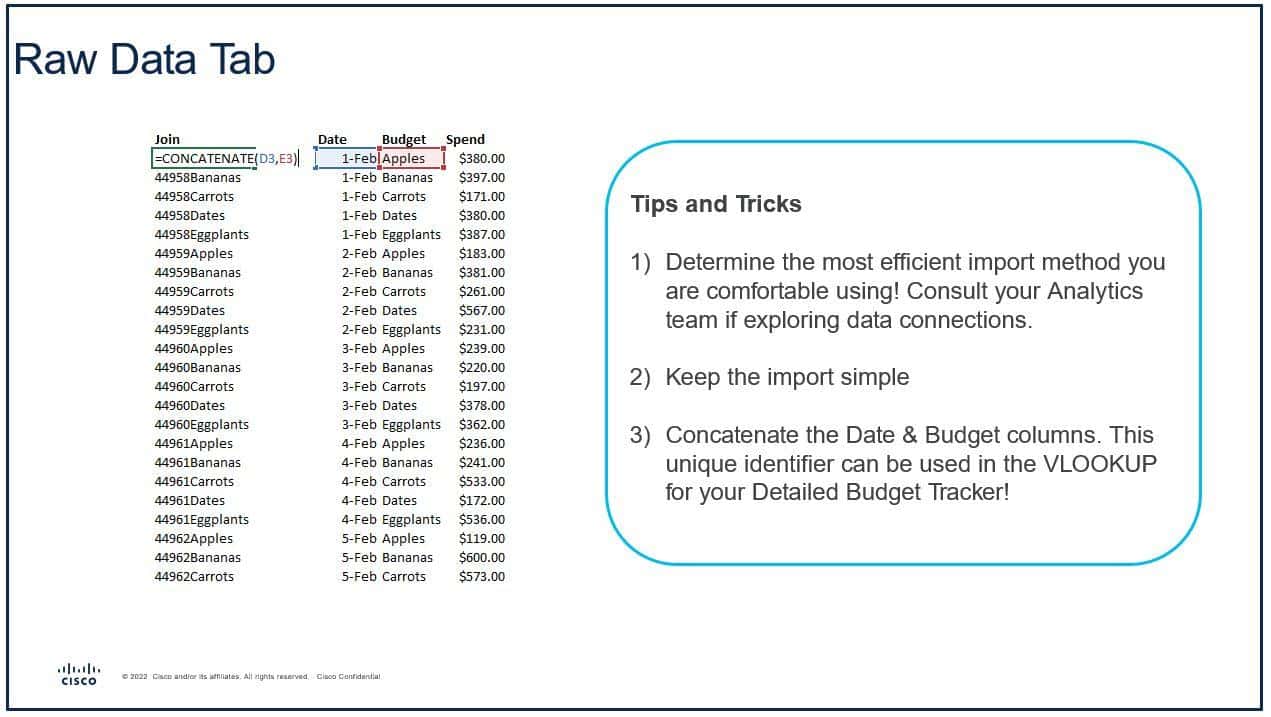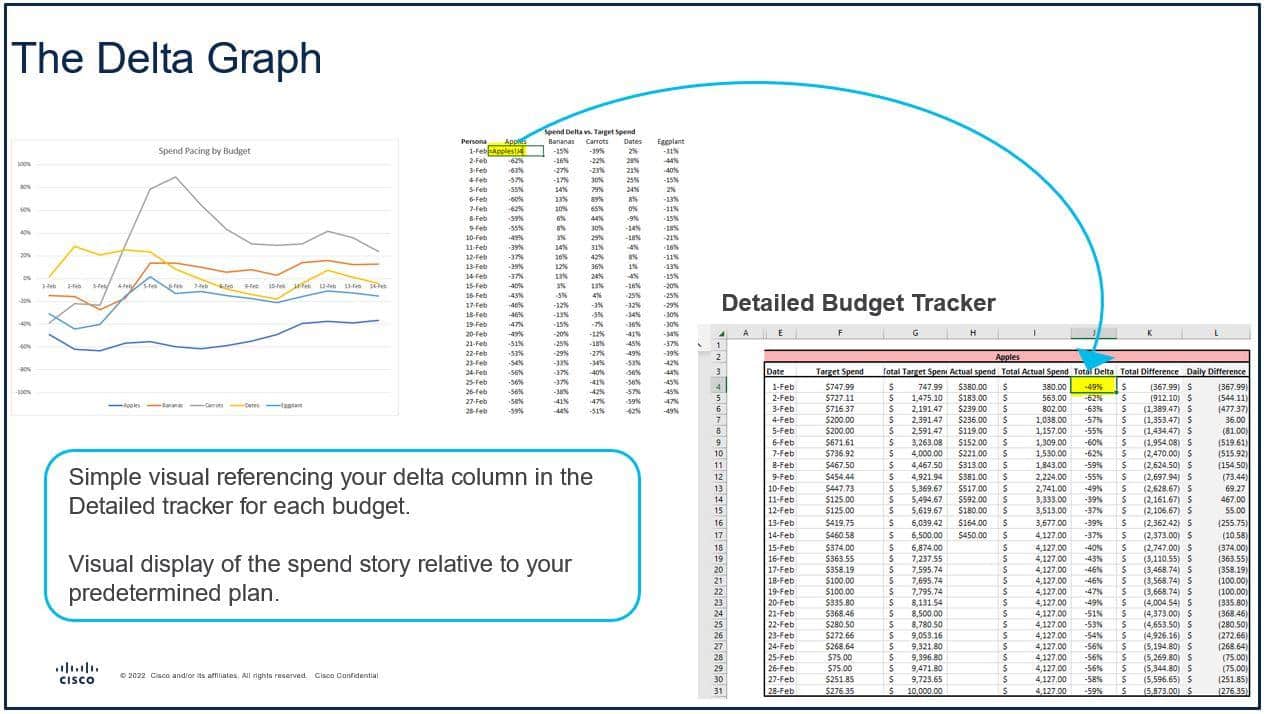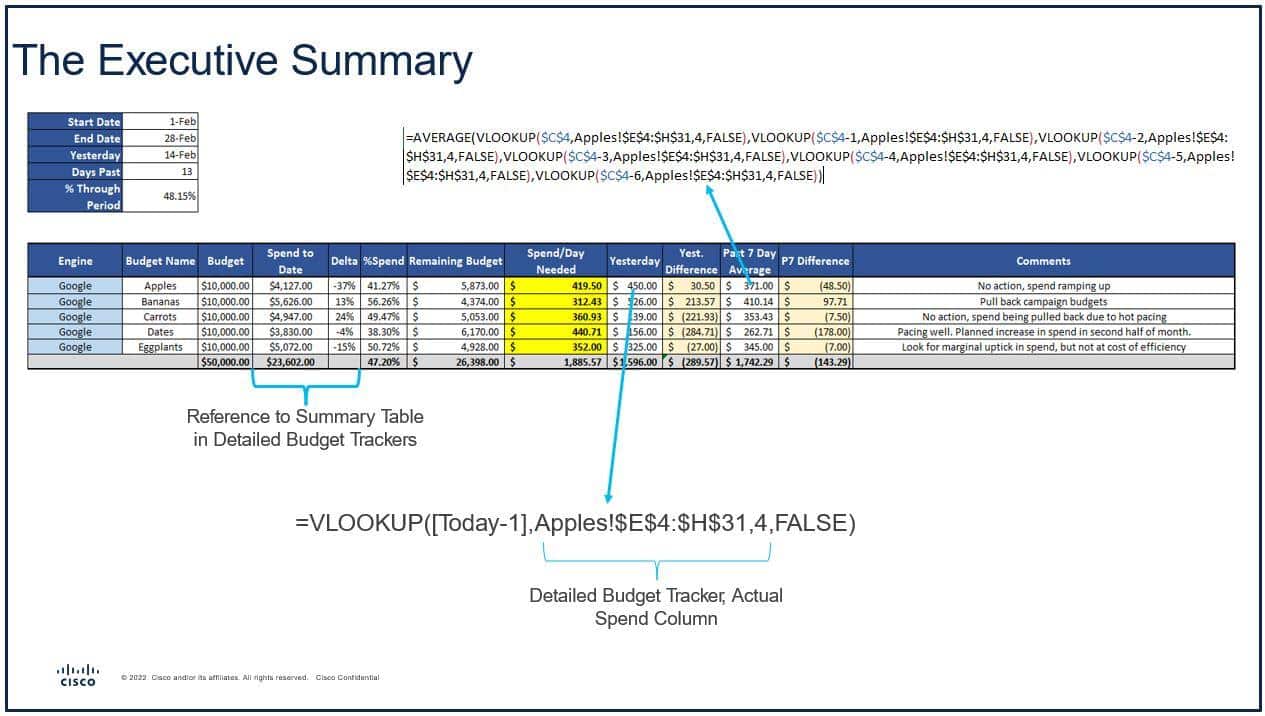Over the previous month or so, practically all of the 2023 business outlook articles I’ve perused (in addition to my very own) included a typical theme:
Recessionary developments within the macroeconomy will strain digital entrepreneurs to indicate the influence of their investments.
One of many core tenets I reside by (and if my fiancée reads this, she’ll most likely roll her eyes) is, “Give attention to what you possibly can management.” Translating this idea to PPC advertising, it’s now extra essential than ever to place processes and instruments in place to maximise management over your budgets.
Enterprise aims could change and have a ripple impact on our budgets, however we are able to management the funds allotted to the channel.
In a earlier article, I highlighted PPC account construction methods that it is best to take into account when trying to enhance cost-effectiveness. In the present day, I need to focus particularly on the subject of price range administration.
I’ll begin with some ideas on my price range administration philosophy after which soar into the tactical ideas that may assist enhance your grasp on spend pacing.
A 4-point method to PPC price range administration
4 core price range administration rules have helped me all through my profession. Whereas there could also be just a few exceptions, the next usually maintain true.
PPC campaigns are eligible for a finite quantity of impressions
Price range administration is essential to success throughout all PPC channels. Nonetheless, in search campaigns, I imagine it’s of heightened significance, as we do not need frequency settings at our disposal.
PPC campaigns are solely eligible to ship a finite variety of impressions, based mostly on the key phrases and focusing on settings utilized.
Spreading price range evenly will lead to higher cost-efficiency than spending throughout a brief, concentrated interval
Should you’ve ever acquired a lump sum of incremental on the finish of a reporting interval, you seemingly know what I’m speaking about.
Until budgets are severely constrained – that means, there’s a massive quantity alternative in your campaigns – you’ll seemingly need to allow much less efficient techniques, that may diminish your mixture efficiency.
As well as, take into consideration how conversion-focused automation options are designed to work.
They’re trying to prioritize your advert supply towards customers probably to transform, whereas in the end hitting your spend targets.
By spreading spend out over an extended interval, you allow the algorithms to get “pickier” about when to indicate adverts, growing your effectivity.
Plan your funding technique earlier than launching the campaigns
It would look like I’m stating the apparent right here, but it surely’s a crucial step that may typically be neglected.
The only method is straight-line budgeting, however that usually will not be the optimum resolution. Work together with your leaders to align your spending patterns within the context of the broader enterprise.
For instance, if there’s a promotion deliberate throughout the flight, chances are you’ll need to enhance spend ranges throughout that point.
Planning forward permits you to perceive how a lot try to be spending within the early days of the marketing campaign and ensures you don’t run out of funds because the marketing campaign ends.
Verify your pacing tracker each day, even when it’s for a minute
As the good Pam Beasley as soon as stated, “Pobody’s nerfect.” Errors occur when managing search accounts.
One of many best methods to catch these errors? You guessed it, your pacing doc.
Fluctuations in spend that deviate from expectations spotlight that an unanticipated change has occurred and may have a crucial influence on efficiency. Bounce on prime of them immediately by checking your pacing each day.
Should you’re questioning whether or not the time spent updating a pacing doc each day might be higher used elsewhere, I encourage you to maintain studying.
Utilizing the information and strategies outlined under, you possibly can create a tracker that takes seconds to replace.
Excel ideas and tips in your PPC pacing tracker
Considered one of my favourite components of search advertising is that there’s not often a one-size-fits-all resolution.
Much like PPC account buildings, the design of your spend tracker ought to completely be tailor-made to your enterprise. Take these concepts, run with them, and put apart those that don’t make sense.
There are 4 core parts of each PPC price range pacing tracker that I create in Excel. You may consider every of those as separate tabs within the workbook. They’re:
- Uncooked platform information.
- The detailed price range tracker (one per managed price range).
- The delta graph.
- The chief/abstract view.
Every of those tabs has a special supposed viewers and objective. We’ll begin with probably the most granular and work our means as much as the high-level views.
My recommendation can be to sort out one step at a time. Subsequent to every part header, I’ll present a tough estimate of how lengthy every step could take, pending your expertise in Excel.
Half 1: Uncooked platform information (30-60 minutes)
A key ingredient of any pacing doc goes to be the precise spend information you might be importing from the platform. As for the information imported, I all the time advise preserving it easy, but granular.
Usually, I design a easy dataset with three columns: Date, Marketing campaign, and Spend.
Labels can be an efficient instrument for associating campaigns with budgets, relying on the complexity of your account.
That stated, the extra fascinating dialog will not be about what information you might be importing, however how the information is getting there.
There are a lot of choices for method information imports. Under are a few completely different flavors (although I might encourage you to succeed in out to your analytics crew, as they could have further concepts based mostly on how your information is saved/structured):
- Scheduling reviews within the platform: Most PPC platforms have a report scheduling characteristic accessible that’s simple to make use of, guaranteeing the day gone by’s information is sitting in your inbox whenever you hop on-line. That is the place I like to recommend beginning your journey in case you are new to pacing automation.
- Internet hyperlinks: Some marketing campaign administration instruments, resembling Search Adverts 360, permit you to create customized URLs in your reviews. This eliminates the necessity to manually import information through copy and paste, as you’ll utilizing the earlier possibility.
- Question connections: Much like internet hyperlinks, you possibly can create connections to information tables in analytics platforms. This method permits you to refresh and replace your information in actual time. Nonetheless, it requires SQL proficiency, so I all the time advise consulting your analytics crew if exploring this route. If that isn’t doable, circle again to the primary possibility.
Bear in mind, it doesn’t matter how your information will get to the pacing doc, as long as it’s complete and correct.
The time saved utilizing one of many automated information connections described above – as a substitute of copying/pasting reviews – is minimal. The most important distinction is the elimination of the potential for human error.
After getting the information within the workbook, the one manipulation required is the creation of the be part of, which is just the distinctive identifier you’ll reference to VLOOKUP the information into the detailed price range tracker (extra within the subsequent part).
When making a be part of, there are some easy concerns to bear in mind:
- Ensure your date column is without doubt one of the parts of the concatenate, as you need to pull in spend by day.
- The nomenclature used for price range names should be constant all through the doc, together with within the “Uncooked information” tab.
Under is an instance of what this concatenate may appear like.

Get the each day publication search entrepreneurs depend on.
Half 2: The detailed price range tracker (1-2 hours)
These tabs are the core of the pacing doc, as they marry your precise spend efficiency to the spending plan. You must have one detailed price range tracker per price range you might be managing.
That may sound redundant, however this is the trick – for those who construct the primary one utilizing formulation and references, it may be shortly duplicated and adjusted in your different line gadgets!
I’ll begin with a snapshot of the detailed price range tracker after which present an outline of automate every ingredient in order that it’s simply replicable.

1. Abstract desk
A easy overview of what the overall price range is and the way a lot we have spent so far. Every price range ought to solely be hardcoded in a single cell within the doc.
I are likely to do the exhausting coding on the “Government abstract” (the ultimate part lined on this article), however you can do it right here as effectively. Your price range spent and remaining price range must be arrange as calculations in order that they replace dynamically.
2. Spend plan particulars
A crucial ingredient that must be custom-made based mostly on the price range period, enterprise wants, and your understanding of client habits. Right here, I like to recommend leaning on historic information as a lot as you possibly can.
One small tip: See that record of numerals subsequent to the Day of Week column? That is for the VLOOKUP we’re about to create. It allows you to use the WEEKDAY perform when automating your VLOOKUP references.
3. Every day spend plan
Mapping out goal each day spends sounds daunting, proper?
Excellent news! We will use VLOOKUPs and math to make this a straightforward, dynamic calculation.
If I had been to put in writing as an equation, it’s:
Every day Spend = [Target Spend for Week] * [Target %Spend by Day of Week]
In Excel, I write a VLOOKUP for every part of the equation, referencing the main points we compiled within the spend plan.
(If you would like a reminder on VLOOKUP finest practices, take a look at my earlier article, The way to stage up your analytical abilities with Excel.)
The Whole Goal Spend column merely aggregates the goal spends over time. The best means to do that is [Today’s Target Spend] + [Yesterday’s Total Target Spend]. You may see how that column provides as much as $10,000, which aligns with our abstract desk.
4. Precise spend
Does that column on the far lefthand facet look acquainted? It ought to, as that is the be part of from our “Uncooked information” tab.
The trick I take advantage of right here is concatenating the date to the Title row (shaded in Crimson). When eager about duplicating the tab and creating an in depth price range tracker, all it’s worthwhile to replace is the desk’s title.
Much like the earlier step, this can be a VLOOKUP of the be part of, pulling within the spend from our “Uncooked information” tab. I then use the identical actual method because the earlier step for the Whole Precise Spend.
5. Calculations
These are calculations I construct based mostly on the Goal and Precise Spends we integrated within the earlier two steps.
Relating to the delta, be sure to are utilizing the Whole columns, versus the Every day Goal/Precise Spends.
Observe: In every of the 5 steps listed above, we’re solely utilizing formulation. I can not stress this sufficient – although it might take longer to create initially, that is what permits your detailed price range tracker to be replicable for extra budgets or for brand spanking new quarters.
Chances are you’ll wrestle with the formulation at first, however after you have a powerful template, price range administration processes will grow to be way more environment friendly – as the one particulars you may must replace are the Price range Title, Price range Quantity, and probably, your Spend plan particulars desk.
Half 3: The delta graph (15-60 minutes)
The aim of this characteristic is to create a easy view of how all campaigns are pacing relative to the predetermined plan. In an ideal world, all budgets would have a 0% deviation from the plan, however that’s not often the case in actual life.
This is without doubt one of the best components to arrange, as you’ve got already performed the heavy lifting.
As you possibly can see within the visible under, this can be a easy reference to the “Detailed price range tracker” tab you’ve got already created. Arrange one column for every detailed price range tracker you created within the earlier step.

A few ideas because it pertains to this part of the pacing tracker:
- Keep in mind that 0% is the best goal right here. The nearer to 0%, the extra tightly aligned spend is to your plan. In case your viewers is not very data-centric, it may be useful to make that visually obvious. Generally, I am going to embody a clear inexperienced field between the -20% to twenty% vary for instance.
- Usually, I maintain the vertical axis vary set at -1 to 1. Nonetheless, as you method the tip of the flight, chances are you’ll need to “zoom in” by lowering to -0.5 to 0.5 and even additional.
Half 4: The chief/abstract view (30-90 minutes)
We save this one for final, as it’s largely constructed off the work you’ve got already performed.
The aim of this view is to enhance the delta graph with a bit extra context and a number of the primary information factors leaders shall be curious to know.

Some ideas relating to the manager abstract:
- As talked about within the detailed price range tracker overview, that is the one tab the place I hardcode any cells. The Dates desk and the Engine/Price range Title/Price range Quantity columns are the one hard-coded cells.
- With this being an government view, the argument might be made to additional scale back the variety of metrics. I like to incorporate Yesterday and Previous 7-Day Common metrics as they assist contextualize whether or not the day gone by was irregular or consistent with the current pattern. This view must be adjusted based mostly in your viewers.
- Creating the abstract utilizing formulation and references makes it simple to duplicate for brand spanking new campaigns or flights. The Previous 7-Day Common metric seems messy and tough to create, but it surely’s fairly simple utilizing a easy trick. When you write the VLOOKUP, you simply want to repeat and paste. The one replace to make is the date you might be referencing (
$C$$-Xwithin the system above).
Increase your PPC budgeting efficiency and scale back the hassle with Excel
Investing time to reinforce your pacing processes and instruments initially of 2023 is a worthwhile endeavor.
Throughout turbulent occasions, maximizing accessible budgets is crucial – and it begins with making a spending plan and adhering to it.
Implementing the strategies described on this article will scale back the combination time spent on pacing updates, whereas additionally offering views that allow a fast response when issues go awry.
As well as, as soon as your template is automated, it is going to be simply replicable and solely requires a few cell adjustments to finish updates for a brand new month or quarter.
Opinions expressed on this article are these of the visitor creator and never essentially Search Engine Land. Workers authors are listed right here.

